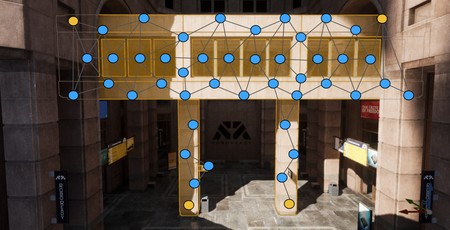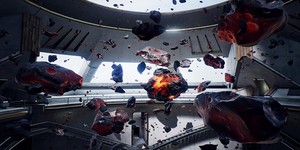Unreal Engine 4.23 adds Chaos, improves ray tracing
September 6, 2019 | 11:36
Companies: #epic-games

Epic Games has announced the release of Unreal Engine 4.23, which brings with it a new high-performance physics and destruction engine and improvements to its real-time ray tracing capabilities.
Originally developed as a game engine, and famously used to drive the eponymous Unreal family of games, Unreal Engine has been broadening its appeal of late with the release of Unreal Studio - aimed, the company explained at the time, at bringing Unreal Engine to designers, architects, manufacturers, and other professions which can benefit from real-time rendering. The release of Unreal Engine 4.22 earlier this year brought initial support for the DirectX Raytracing (DXR) application programming interface (API), allowing suitably-equipped graphics hardware to use ray tracing alongside traditional rendering to improve the quality of reflections, shadows, and other lighting effects.
Now, Unreal Engine 4.23 builds on that support with an optimised real-time ray tracing engine, alongside the first public release of the company's new physics and destruction engine: Chaos.
'Revealed in a demo at GDC 2019, Chaos is Unreal Engine's new high-performance physics and destruction system available to preview in Beta form with the 4.23 release,' explains Epic Games' Jeff Wilson in the announcement. 'With Chaos, users can achieve cinematic-quality visuals in real-time in scenes with massive-scale levels of destruction and unprecedented artist control over content creation.'
The destruction aspect of Chaos uses a new asset class dubbed Geometry Collections. Built from one or more static meshes, Geometry Collections can be broken into multiple pieces using the engine's new Fracturing tools then sub-fractured into clusters. Each piece is connected via a customisable graph with static or dynamic anchors which break depending on strain. When an object is destroyed, Chaos can link to the engine's other simulation systems: 'When a building breaks apart it generates a large amount of dust and smoke,' Wilson explains. 'To create the marriage between destruction and VFX, data from the physics system can be sent to Niagara when an object collides or breaks apart, and that data can be used to generate interesting secondary effects.'
The new engine also includes improvements in its ray tracing capabilities, including expanded support for DirectX 12 features, an improved denoiser, higher-quality ray-traced global illumination (RTGI), and wider geometry and material support including landscape terrain and procedural meshes. There are performance enhancements, too: 'We've improved support for multi-bounce Ray Traced Reflections (RTR) by falling back to Reflection Captures in the scene,' says Wilson. 'This means that intra-reflections (or reflections inside of reflections) that are displaying black, or where you've set a max reflection distance, will fall back to these raster techniques instead of displaying black. This can subtly improve the quality of reflections without using multiple raytraced bounces, greatly increasing performance.'
Other enhancements include a beta release for Virtual Texturing, including a new streaming system designed to reduce memory overhead and increase performance with very large textures and a Runtime Virtual Texture system which can cache shading data over large areas, an Unreal Insights analysis system, native support for the HoloLens 2 augmented reality platform, and improvements in the production pipeline for virtual reality.
Unreal Engine 4.23 is available now, though Epic Games has not yet detailed when the beta functionality will be promoted to production nor when the first software to make use of the new engine will begin to appear.

MSI MPG Velox 100R Chassis Review
October 14 2021 | 15:04









Want to comment? Please log in.